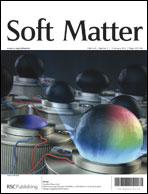Biomimetic lubrication
Abstract
The lubrication of synovial joints is extremely efficient, allowing smooth motion to be performed between relatively soft and vulnerable cartilage surfaces for close to 100 years. A failure of this system leads to significant pain and loss of life quality. The ultrastructure of cartilage is complex and of functional significance. The molecules that are involved in the lubrication process are of many types, and they associate with each other in a complex fashion. This review focuses on the lubricating molecules, both biolubricants and biomimetic ones that share some features of the biolubricants. It discusses the conditions that must be fulfilled for achieving low friction in aqueous media and emphasizes the importance of load bearing capacity and self-healing ability.


 Please wait while we load your content...
Please wait while we load your content...